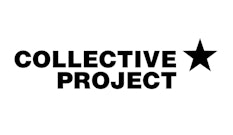
The response from the governor’s office came fast. By Tuesday, Oct. 22, Maine Gov. Janet Mills had sent a letter to U.S. Agriculture Secretary Sonny Perdue, urging his department to get moving on banking reforms for the newly legal U.S. hemp industry.
This followed the bad news at Sheepscot General Farm, in rural Whitefield, Maine, the previous week: The hemp business’s bank was shutting them out. And their insurance provider was declining to renew coverage on the farm.
The Portland Press-Herald first reported the story, detailing the sudden plight of co-owners Taryn and Ben Marcus, who found out on Friday, Oct. 18, that their bank, Camden National, “called to say it was closing the farm’s bank account and calling the $12,000 equipment loan it had just issued for a produce cooler the couple had ordered but have yet to receive.”
This is a familiar narrative for cannabis businesses who’ve found their financial institutions backing away quickly from the federally illegal industry. But for hemp businesses, now protected under the provisions of the 2018 Farm Bill and already struggling with razor-thin profit margins this year, it seems like banking woes should be a thing of the past.
“We thought it was just a mistake, that it would all be fine once we explained we were growing hemp, not marijuana,” Taryn Marcus told the newspaper. “But they understood that. They knew hemp was legal, but said without federal guidelines on how to handle hemp, they had no choice but to cut us loose.”
With all due haste, Mills’ office responded with an urgent letter to Perdue.
“Most recently, it has come to our attention that growers in Maine are receiving notices of bank account closures and insurance policies not being renewed because of uncertainty around federal hemp regulations,” she wrote. “These are troubling developments that stifle the growth and aspirations of hardworking farm businesses.
“Given the growth and rate at which hemp production has accelerated in Maine and across the country and continued confusion around federal laws, we urge you to work swiftly with the Office of Management and Budget to finalize USDA’s guidance for state implementation plans. This federal guidance will not only help provide long-needed clarification to the states but will be valuable to the broader lending and insurance industries.”
The issue has two fronts: the USDA’s long-delayed hemp regulations and the slow crawl of the SAFE Banking Act through Congress.
The USDA’s hemp regulations are due out in November, though they’ve been subject the same fits and starts that much agriculture policy must endure in a busy, distractible Washington. Once those rules are in place—and the department has said the plan is to ensure they’re in place for the 2020 growing season—the thinking is that banks and insurance providers will feel more comfortable in working with hemp businesses. There will be a federal framework supporting the industry.
As to the banking bill, the U.S. House passed the measure 321-103 in September. Now, the bill awaits attention in the U.S. Senate—a much more onerous hurdle for cannabis reform policies than the Democrat-controlled House. The SAFE Banking Act would protect banks from any federal prosecution when working with cannabis business clients.
Taryn told local news station WMTW that her business had planned to switch banks to stay afloat during this time—a process that nonetheless added costs and great deal of paperwork during this busy time of the year.
Other businesses have faced this issue in Maine, where 163 licensed hemp growers are feeling their way through this new industry. Local and regional credit unions are often the main sources for banking relationships with small cannabis businesses and hemp farms. But even in Sheepscot’s case, Camden National is a Maine-based financial institution. In the absence of formal small business loans as in Sheepscot’s case, other businesses have focused on private financing or not outside dollars at all. None of the available options are ideal for upstart farmers hoping to add hemp to their work in this post-Farm Bill landscape.

























